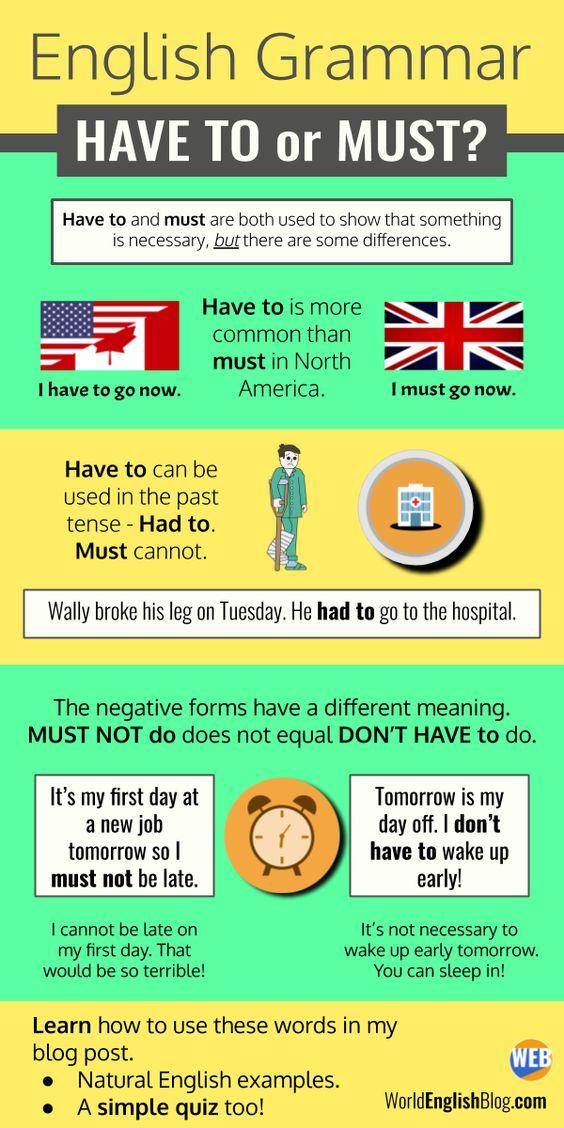"Have to" and "must" are both used to show that something is necessary, but there are some differences. Let’s understand how to use these words with some with natural English examples below.

The two expressions "have to" and "must" both show that something is necessary, but there are some differences.
- "Have to" can be used in the past tense ("had to" do something) while "must" can not.
- The negative forms have a different meaning. "Must not" do does not equal "don't have" to do.
- "Have to" do is more commonly used in North America than "must" do.
Have/Has to do (something)
If we have to do something it means it is necessary and we are required to do it, for example:
- Lucy has to work this Saturday.
- Tim broke his arm on Tuesday. He had to go to the hospital.
- I have to finish my essay today or my teach will be angry.
MUST do (something)
"Must" can be used in the same way as "have to", such as here:
It’s getting late, I must go. = It’s getting late, I have to go.
-> "Must" can be used to give your opinion or recommendation.
- I watched that new Sci-Fi movie last night. It’s great! You must watch it.
- I’m having a big barbecue party this weekend, you must come!
Are you interested in teaching English as a foreign language? Get your TEFL or TESOL certification with ITTT.
Register now & get certified to teach english abroad!


